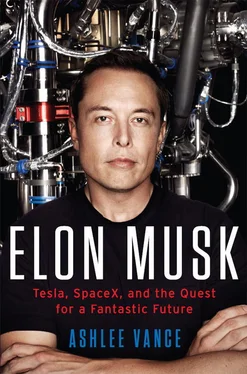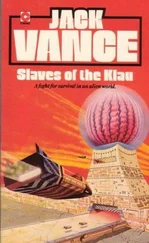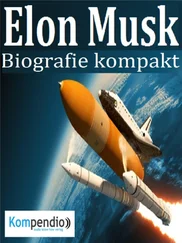2

AFRICA
THE PUBLIC FIRST MET ELON REEVE MUSK IN 1984. The South African trade publication PC and Office Technology published the source code to a video game Musk had designed. Called Blastar, the science-fiction-inspired space game required 167 lines of instructions to run. This was back in the day when early computer users were required to type out commands to make their machines do much of anything. In that context, Musk’s game did not shine as a marvel of computer science but it certainly surpassed what most twelve-year-olds were kicking out at the time. Its coverage in the magazine netted Musk five hundred dollars and provided some early hints about his character. The Blastar spread on page 69 of the magazine shows that the young man wanted to go by the sci-fi-author-sounding name E. R. Musk and that he already had visions of grand conquests dancing in his head. The brief explainer states, “In this game you have to destroy an alien space freighter, which is carrying deadly Hydrogen Bombs and Status Beam Machines. This game makes good use of sprites and animation, and in this sense makes the listing worth reading.” (As of this writing, not even the Internet knows what “status beam machines” are.)
A boy fantasizing about space and battles between good and evil is anything but amazing. A boy who takes these fantasies seriously is more remarkable. Such was the case with the young Elon Musk. By the middle of his teenage years, Musk had blended fantasy and reality to the point that they were hard to separate in his mind. Musk came to see man’s fate in the universe as a personal obligation. If that meant pursuing cleaner energy technology or building spaceships to extend the human species’s reach, then so be it. Musk would find a way to make these things happen. “Maybe I read too many comics as a kid,” Musk said. “In the comics, it always seems like they are trying to save the world. It seemed like one should try to make the world a better place because the inverse makes no sense.”
At around age fourteen, Musk had a full-on existential crisis. He tried to deal with it like many gifted adolescents do, turning to religious and philosophical texts. Musk sampled a handful of ideologies and then ended up more or less back where he had started, embracing the sci-fi lessons found in one of the most influential books in his life: The Hitchhiker’s Guide to the Galaxy, by Douglas Adams. “He points out that one of the really tough things is figuring out what questions to ask,” Musk said. “Once you figure out the question, then the answer is relatively easy. I came to the conclusion that really we should aspire to increase the scope and scale of human consciousness in order to better understand what questions to ask.” The teenage Musk then arrived at his ultralogical mission statement. “The only thing that makes sense to do is strive for greater collective enlightenment,” he said.
It’s easy enough to spot some of the underpinnings of Musk’s search for purpose. Born in 1971, he grew up in Pretoria, a large city in the northeastern part of South Africa, just an hour’s drive from Johannesburg. The specter of apartheid was present throughout his childhood, as South Africa frequently boiled over with tension and violence. Blacks and whites clashed, as did blacks of different tribes. Musk turned four years old just days after the Soweto Uprising, in which hundreds of black students died while protesting decrees of the white government. For years South Africa faced sanctions imposed by other nations due to its racist policies. Musk had the luxury of traveling abroad during his childhood and would have gotten a flavor for how outsiders viewed South Africa.
But what had even more of an impact on Musk’s personality was the white Afrikaner culture so prevalent in Pretoria and the surrounding areas. Hypermasculine behavior was celebrated and tough jocks were revered. While Musk enjoyed a level of privilege, he lived as an outsider whose reserved personality and geeky inclinations ran against the prevailing attitudes of the time. His notion that something about the world had gone awry received constant reinforcement, and Musk, almost from his earliest days, plotted an escape from his surroundings and dreamed of a place that would allow his personality and dreams to flourish. He saw America in its most clichéd form, as the land of opportunity and the most likely stage for making the realization of his dreams possible. This is how it came to pass that a lonesome, gawky South African boy who talked with the utmost sincerity about pursuing “collective enlightenment” ended up as America’s most adventurous industrialist.
When Musk did finally reach the United States in his twenties, it marked a return to his ancestral roots. Family trees suggest that ancestors bearing the Swiss German surname of Haldeman on the maternal side of Musk’s family left Europe for New York during the Revolutionary War. From New York, they spread out to the prairies of the Midwest—Illinois and Minnesota, in particular. “We had people that fought on both sides of the Civil War apparently and were a family of farmers,” said Scott Haldeman, Musk’s uncle and the unofficial family historian.
Throughout his childhood, boys teased Musk because of his unusual name. He earned the first part of it from his great-grandfather John Elon Haldeman, who was born in 1872 [1] Journal of the Canadian Chiropractic Association, 1995.
and grew up in Illinois before heading to Minnesota. There he would meet his wife, Almeda Jane Norman, who was five years younger. By 1902, the couple had settled down in a log cabin in the central Minnesota town of Pequot and given birth to their son Joshua Norman Haldeman, Musk’s grandfather. He would grow up to become an eccentric and exceptional man and a model for Musk. [2] Two years after the birth of his son, John Elon began to show signs of diabetes. The condition amounted to a death sentence at the time and, despite being only thirty-two, John Elon learned that he would likely have six months or so to live. With a bit of nursing experience behind her, Almeda took it upon herself to discover an elixir or treatment that would extend John Elon’s life. According to family lore, she hit on chiropractic procedures as an effective remedy, and John Elon lived for five years following the original diabetes diagnosis. The life-giving procedures established what would become an oddly rich chiropractic tradition in the Haldeman family. Almeda studied at a chiropractic school in Minneapolis and earned her doctor of chiropractic, or, D.C., degree in 1905. Musk’s great-grandmother went on to set up her own clinic and, as far as anyone can tell, became the first chiropractor to practice in Canada.
Joshua Norman Haldeman is described as an athletic, self-reliant boy. In 1907, his family moved to the prairies of Saskatchewan, and his father died shortly thereafter when Joshua was just seven, leaving the boy to help run the house. He took to the wide-open land and picked up bronco horseback riding, boxing, and wrestling. Haldeman would break in horses for local farmers, often hurting himself in the process, and he organized one of Canada’s first rodeos. Family pictures show Joshua dressed in a decorative pair of chaps demonstrating his rope-spinning skills. As a teenager, Haldeman left home to get a degree from the Palmer School of Chiropractic in Iowa and then returned to Saskatchewan to become a farmer.
When the depression hit in the 1930s, Haldeman fell into a financial crisis. He could not afford to keep up with bank loans on his equipment and had five thousand acres of land seized. “From then on, Dad didn’t believe in banks or holding on to money,” said Scott Haldeman, who would go on to receive his chiropractic degree from the same school as his father and become one of the world’s top spinal pain experts. After losing the farm around 1934, Haldeman lived something of a nomadic existence that his grandson would replicate in Canada decades later. Standing six feet, three inches, he did odd jobs as a construction worker and rodeo performer before settling down as a chiropractor. [3] Haldeman also entered politics, trying to start his own political party in Saskatchewan, publishing a newsletter, and espousing conservative, antisocialist ideas. He would later make an unsuccessful run for Parliament and chair the Social Credit Party.
Читать дальше
Конец ознакомительного отрывка
Купить книгу











